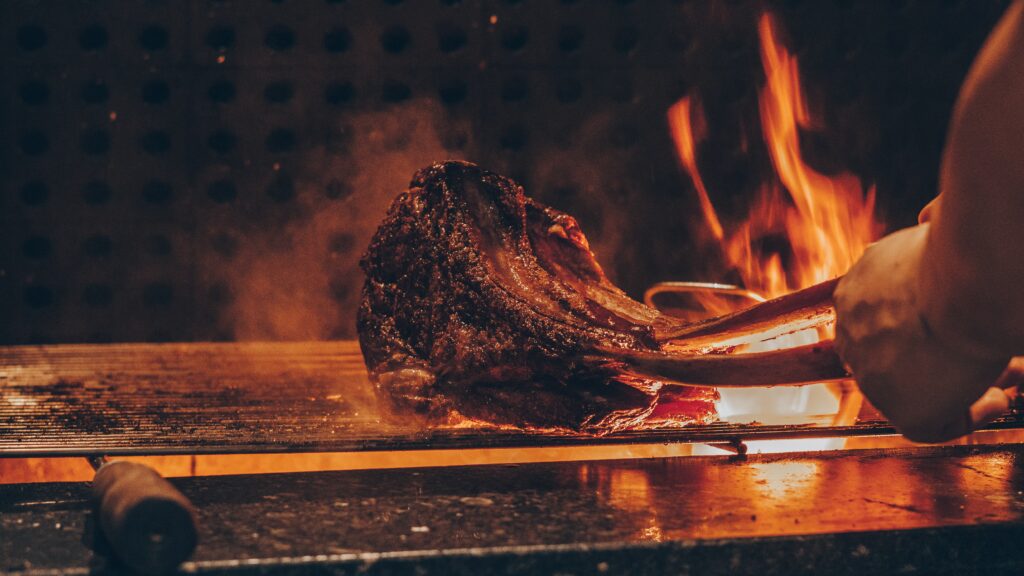Meat from the pectoral muscles or the cow’s breast is used to make brisket. Brisket may be a delightful delicacy that will keep your family coming back for more when it is cooked, grilled, or smoked properly. Unfortunately, if you make a mistake, your brisket could end up being utterly spoiled, undercooked, and dry. These are some of the most common brisket mistakes you should avoid.
Purchasing Briskets of Poor Quality
Buying brisket of poor quality is one of the major errors that backyard grill masters and amateur cooks make. The following advice can help you get the most brisket for your money:
Feel how firm it is. Feel the stiffness and texture of the brisket by picking it up. Brisket should be supple and soft, not floppy and tough.
Evaluate the marbling. Pick a brisket with more marbling because this indicates a higher fat content. The brisket will be more tender as a result of the marbling.
Size matters. Pick a brisket that is between 10 and 12 pounds in weight. It will ensure that the brisket was not already trimmed when bought.
While a high-quality brisket will cost more, it will be worth it when it cooks up soft and delectable.
Using the Wrong Temperature for Cooking
Your mind probably jumps to the conventional 225–250° when you think of low and slow, but different smokers have different needs. For large offset smokers, you might need to raise the temperature to 275–280°F to consider the greater airflow constantly cooling the meat in the chamber. For smaller smokers, 225° would be perfect, whereas 275-280° might burn your brisket or produce unfavorable outcomes.
Here are some suggestions for various smoker types:
Traeger Grill – Ironwood – 225°F
Charcoal Smoker – 250°F
Oklahoma Joe’s Highland Reverse Flow Smoker – 225°F
Choosing the Wrong Rub
Some people like to season their brisket with everything in their spice rack, while others like to keep it straightforward with salt, pepper, and the occasional garlic clove. No two clouds of smoke are exactly comparable, but larger offset smokers are likely to offer a more powerful smokey flavor than a straightforward seasoning would do. Smaller cookers can require some additional seasoning as a form of compensation. The time you spend cooking a brisket varies from person to person, especially as you become better at doing it. We’ve also gathered information on creating basic rub ingredients; you can check this out.
Not Enough Rest Time for Brisket
Many pitmasters view the resting period as more significant than the wood or rub you employ. Before slicing, the rendered fat and liquids can redistribute, guaranteeing tender, succulent results. Placing your brisket in a cooler and letting it slowly defrost is a terrific way to let it rest. The finest results come from sleeping for at least one to two hours, regardless of how you choose to do it.
Before wrapping, only consider the time and temperature.
There are many more aspects to consider when determining whether your brisket is ready to be wrapped than just how long it has been cooking and what temperature it is. By wrapping the brisket too quickly, you risk ruining its texture or cooking it too much. The color, size, and fat of the bark are other considerations. The more smoke flavor incorporated into the brisket, the darker the hue. The exterior will have a great, crusty bark from the combination of meat, rub, and fat renders.
Throughout the cooking process, the brisket should have visually shrunk to 30–40% of its initial size. Last but not least, the extracted fat will be yellow and liquefied rather than springy. After completing all these steps AND reaching an internal temperature of 175°F or 185°F, the brisket is ready for wrapping.
Making Unnecessarily Major Changes
Brisket cooking is a trial-and-error process for novice pitmasters. Some folks will successfully cook a brisket before ecstatically switching the type of wood, temperature, rub, water pan, and wrapper. It’s best to make changes gradually rather than all at once so that you can pinpoint the actual reason why something goes well or not.
Spraying the Fat
The rendering of fat is one of the ways your brisket gets its softness. Avoid sprinkling the fat while cooking your brisket to guarantee that this process is uninterrupted. The fat must remain heated to render, and the spray will continuously lower the temperature, preventing the fat from melting as efficiently as possible.
Temperature Variations
Great brisket results depend greatly on efficient fire management. Allowing the fire to go out, even for a few minutes, will halt the brisket from cooking and cause the internal temperature to drop, resulting in a final product that has been cooked unevenly.
Incorrect fat-trimming techniques
Before cooking, it is crucial to remove the right amount of fat from the brisket. If the brisket is over-trimmed, the fat won’t render as well and is more likely to burn or dry out, resulting in uneven cooking and a dry finished product. As a general guideline, cut the fat to 14″.
CONCLUSION
Even the most seasoned chefs are likely capable of making more than one of these errors. Keep going if your brisket isn’t flawless the first time; hopefully, you can learn a few things to avoid.
If you have any ideas or would like to see more discussions, let us know!

